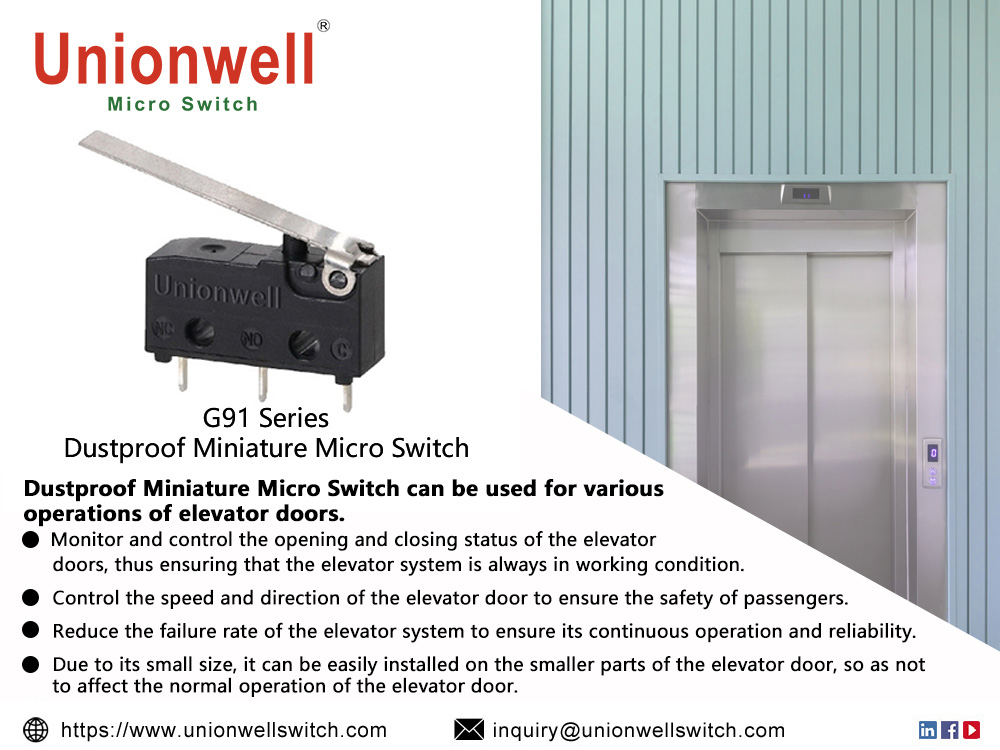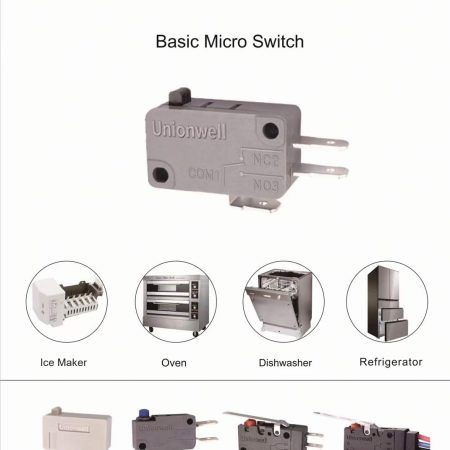How Miniature Micro Switches Ensure Elevator Operation
I. Introduction
Miniature micro switches are an essential component in modern elevators. These vital switches play a crucial role in the proper functioning of elevators.
1. Explanation of Miniature Micro Switches
Miniature micro switches are small switches that are commonly used in controlling the electrical circuits of devices that require minimal force to operate. They are designed to detect or sense the exact position of a mechanical device, allowing electric circuits to be switched off or on accordingly.
2. The Importance of Miniature Micro Switches for Elevator Function
Elevators rely on a variety of safety mechanisms to function smoothly, and miniature micro switches are an integral part of these mechanisms. These switches are responsible for detecting the position of the elevator car and the doors, allowing the elevator to operate safely and seamlessly.
For example, if the elevator is not appropriately aligned with the landing floor, the micro switch will not allow the elevator door to open, preventing passengers from falling into the elevator shaft. Moreover, miniature micro switches are essential in detecting whether the passengers have entered or exited the elevator, thus ensuring the safety of the passengers inside the elevator.

II. Elevator Safety Mechanisms
Elevators are an essential part of modern buildings, but they can also pose serious safety risks if not properly maintained or equipped with adequate safety mechanisms. Fortunately, elevators today are designed with multiple safety features to prevent accidents and ensure passenger safety.
1. Overview of Key Safety Features
Some of the most critical safety features in elevators include:
- Doors: Elevator doors are equipped with sensors that prevent them from closing when an object or person is in the way. They are also designed to withstand a certain amount of force without breaking, to prevent accidents or entrapment.
- Emergency brakes: Elevator cars are equipped with emergency brakes that automatically activate if the elevator exceeds a certain speed or experiences abnormal movement.
- Overload protection: Elevators are designed to hold a maximum weight capacity, and sensors are installed to detect if this weight limit is exceeded. If it is, the elevator will not operate until the weight is reduced.
- Fire protection: Elevators are equipped with smoke detectors and fire extinguishers, as well as specialized controls that allow firefighters to manually access and control the elevator in case of a fire.
- Alarm buttons: Elevator cars and landings have alarm buttons that passengers can use to call for help in case of an emergency or malfunction.
2. Explanation of How Micro Switches Contribute to Overall Safety
Micro switches are small electrical devices that play a vital role in elevator safety. They are typically installed at various points along the elevator’s travel path, including on the doors, hoistway, and other mechanical components. They work by detecting when a certain condition is met, such as the elevator reaching a specific floor, the doors closing, or someone pressing a button.
When a micro switch is activated, it sends a signal to the elevator’s control system, which then triggers the appropriate safety response. For example, if a passenger presses the emergency stop button, a micro switch will detect this and immediately stop the elevator car. If a door sensor detects an obstacle, a micro switch will cause the door to reopen, preventing entrapment or injury.
Micro switches are designed to be highly reliable and accurate, ensuring that safety mechanisms are activated precisely when needed. They are also designed to withstand harsh environments and high levels of electrical current, making them ideal for use in elevators and other industrial settings.
III. Micro Switch Applications in Elevator Construction
Elevator construction is a complex process that requires careful attention to detail and safety. One important component of elevator construction is the use of micro switches. These tiny switches play a crucial role in ensuring the safe and reliable operation of elevators. In this article, we’ll explore some of the typical applications for miniature micro switches in elevators and their importance in these applications.
1. Examples of Where Micro Switches are Typically Installed
Micro switches are used in a wide variety of applications in elevator construction. Some examples include:
- Door Interlocks: Micro switches are installed in elevator door interlocks to ensure that the doors are securely closed and locked before the elevator begins to move. These switches help prevent accidents by ensuring that passengers cannot accidentally fall down the elevator shaft.
- Overload Protection: Micro switches are used in elevator overload protection systems. These systems monitor the weight of the elevator car and prevent the elevator from moving if it becomes overloaded. This helps prevent damage to the elevator and ensures passenger safety.
- Limit Switches: Micro switches are also used as limit switches to ensure that the elevator car stops at the correct floor and does not travel beyond the top or bottom of its shaft. These switches help prevent accidents and ensure that the elevator operates safely and efficiently.
2. The Role of Micro Switches in Elevator Construction
Micro switches play a vital role in elevator construction. These tiny switches are designed to activate when a specific condition is met, such as when a door is closed or when the weight of the elevator car is exceeded. When the switch is activated, it sends a signal to the elevator’s control system, which then takes appropriate action.
The importance of micro switches in elevator construction cannot be overstated. These switches help ensure that elevators operate safely and reliably. By preventing accidents and protecting passengers, micro switches help maintain the high safety standards that are expected in modern elevator design.
IV. Conclusion
Miniature micro switches play a critical role in ensuring the smooth and safe operation of elevators. These small but essential mechanisms are responsible for controlling the opening and closing of elevator doors, as well as detecting and responding to various safety hazards. Without miniature micro switches, elevators would not function properly and could pose serious risks to users.
One of the most important functions of miniature micro switches in elevators is door control. These switches are responsible for detecting the presence of objects or people in the doorway, determining when the doors can be safely opened and closed, and ensuring that the doors remain securely shut while the elevator is in motion. This is especially important in high-rise buildings and other situations where the elevator doors are exposed to high levels of foot traffic.
Another critical use of miniature micro switches in elevators is safety monitoring. These switches are designed to detect any abnormalities in the elevator’s operation, such as excessive speed, imbalances in weight distribution, or other mechanical issues that could compromise safety. When an issue is detected, the miniature micro switch sends a signal to the elevator’s control system, triggering an emergency shutdown to prevent any further danger to passengers.
Overall, the importance of miniature micro switches in ensuring the smooth and safe operation of elevators cannot be overstated. As such, it is essential that building owners and facility managers prioritize the regular inspection and maintenance of these switches, in order to ensure their continued reliability and effectiveness. By doing so, they can help to guarantee the safety and well-being of all those who rely on elevators in their buildings.






